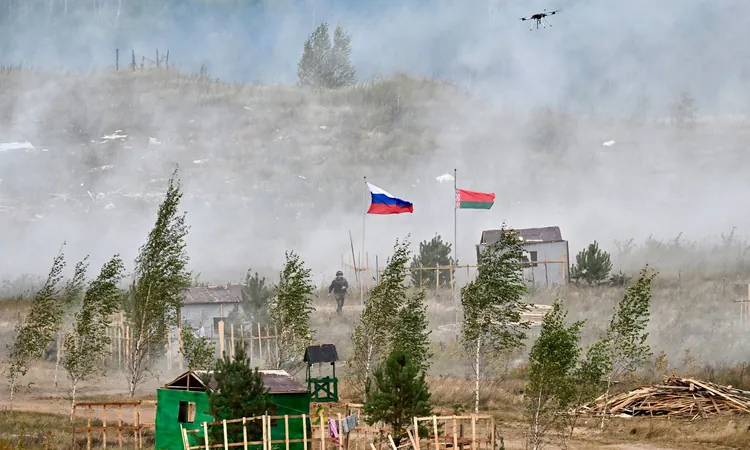
U.S. Observers on High Alert as Russia and Belarus Launch Zapad-2025 Military Drills
2025-09-15
Author: Noah
Open Arms or Hidden Agendas?
On September 15, U.S. military representatives were granted a front-row seat to the ongoing Zapad-2025 military exercises conducted by Russia and Belarus. This invitation, announced by Belarus's Defense Ministry, aims to display transparency, with Belarusian Defense Minister Viktor Khrenin declaring, "We will show you whatever you want to see."
An Unnerving Display of Military Might
The Zapad-2025 drills kicked off on September 12 and are set to conclude on September 16. Spanning across Belarus and western Russia, these exercises have sparked significant trepidation among NATO's eastern allies, particularly Poland, Lithuania, and Latvia.
NATO Watchers on the Ground
The Ministry confirmed that observers from three NATO countries— the U.S., Turkey, and Hungary— were present at a training ground located near Barysaw, roughly 74 kilometers (45 miles) northeast of Minsk. Khrenin emphasized the unprecedented openness of these drills, stating, "It is hard to imagine such openness that we demonstrate and ensure in this exercise." His insistence that they have "nothing to hide" raises eyebrows in light of previous military posturing between NATO and Russia.
A Shift in Diplomatic Dynamics
The presence of U.S. observers coincides with a new chapter in U.S.-Belarus relations. Just days prior, Belarus released 52 prisoners, including journalists and opposition figures, following talks with a U.S. delegation led by presidential envoy John Cole. This diplomatic thaw might indicate a reengagement strategy from Washington.
Sanction Lifting and its Implications
After his discussions with Belarusian leader Alexander Lukashenko, Cole announced plans to lift sanctions on Belavia, the state airline of Belarus. Such moves could signal a willingness to stabilize relations, but they also bring questions about the implications for regional security.
Zapad 2025: Defensive or Aggressive?
While the Zapad military exercises are officially categorized as defensive, they have long been a source of unease for European nations. Notably, the 2025 iteration has been scaled back and conducted further from NATO borders, yet concerns remain. In fact, as the drills commenced, Warsaw took the step of closing all border crossings with Belarus.
East vs. West: A Continual Game of Tension
Western officials continue to warn that despite Minsk’s claims of transparency, the Zapad exercises are perceived as a military pressure tactic aimed at NATO’s eastern flank. The growing tension in the region is undeniable, and the stakes have never been higher as these military maneuvers unfold.









 Brasil (PT)
Brasil (PT)
 Canada (EN)
Canada (EN)
 Chile (ES)
Chile (ES)
 Česko (CS)
Česko (CS)
 대한민국 (KO)
대한민국 (KO)
 España (ES)
España (ES)
 France (FR)
France (FR)
 Hong Kong (EN)
Hong Kong (EN)
 Italia (IT)
Italia (IT)
 日本 (JA)
日本 (JA)
 Magyarország (HU)
Magyarország (HU)
 Norge (NO)
Norge (NO)
 Polska (PL)
Polska (PL)
 Schweiz (DE)
Schweiz (DE)
 Singapore (EN)
Singapore (EN)
 Sverige (SV)
Sverige (SV)
 Suomi (FI)
Suomi (FI)
 Türkiye (TR)
Türkiye (TR)
 الإمارات العربية المتحدة (AR)
الإمارات العربية المتحدة (AR)